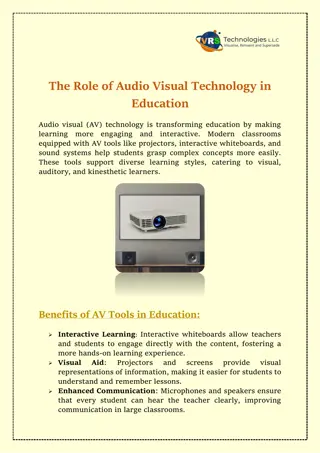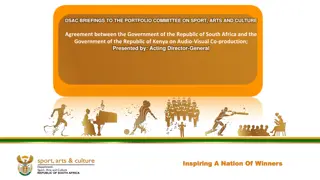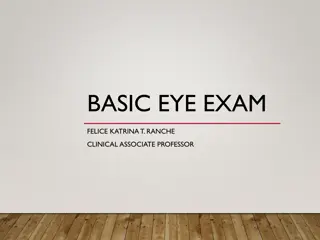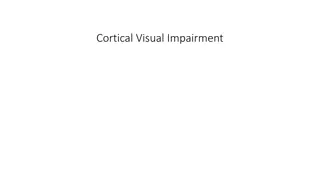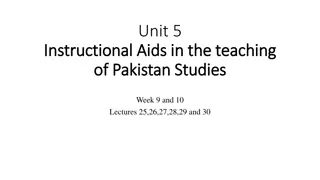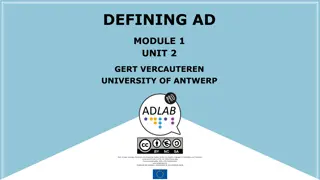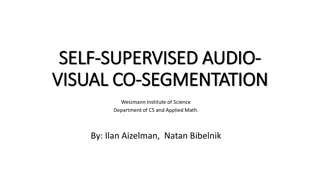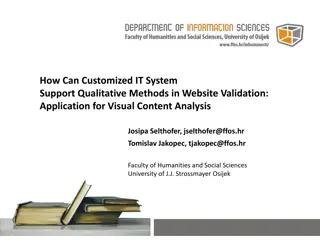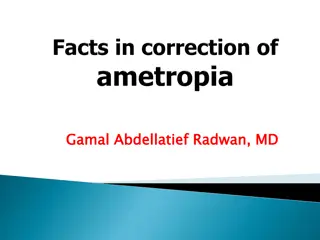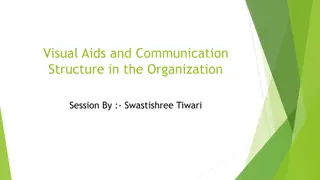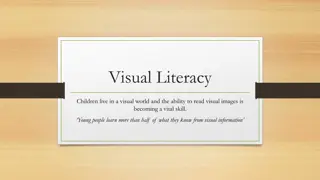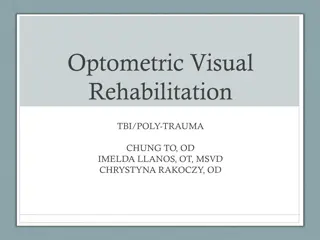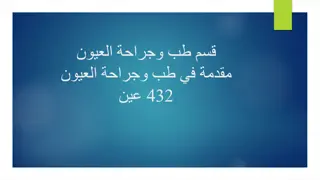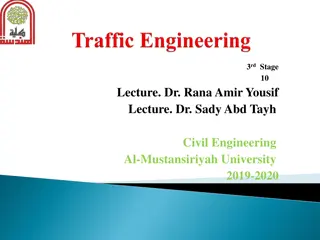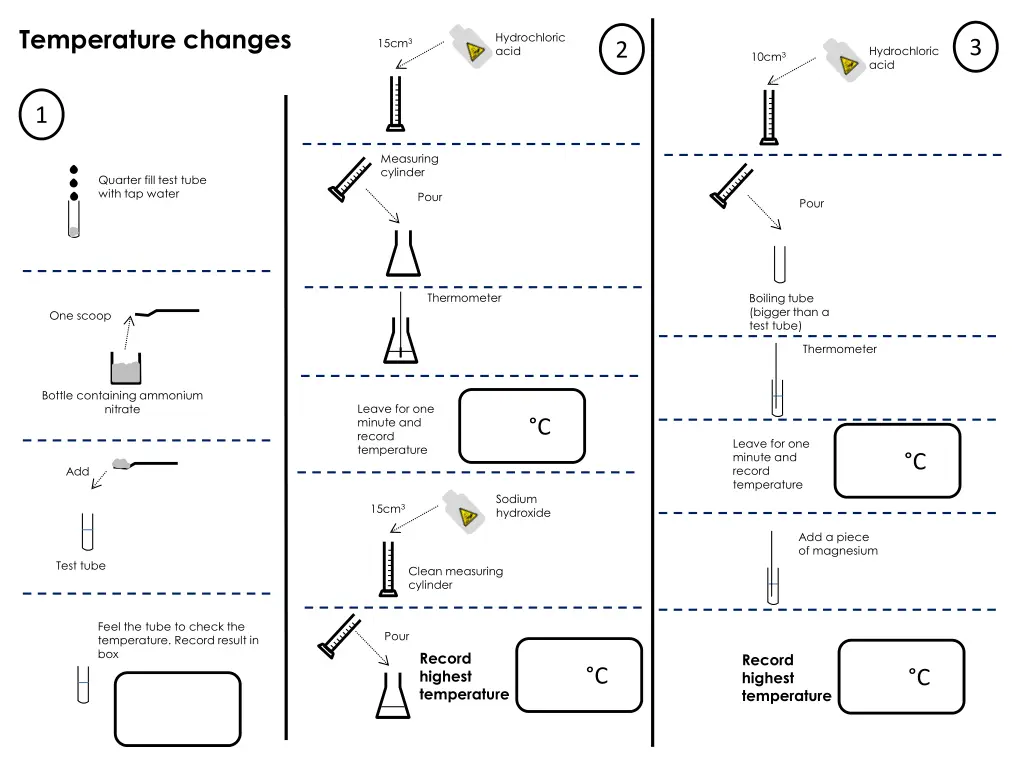
Chemical Reactions Practical Experiments
Explore various chemical reactions through practical experiments involving substances like hydrochloric acid, ammonium nitrate, sodium hydroxide, magnesium, and more. Understand observations, reactions, mass changes, equations, and safety considerations in a hands-on learning approach.
Download Presentation

Please find below an Image/Link to download the presentation.
The content on the website is provided AS IS for your information and personal use only. It may not be sold, licensed, or shared on other websites without obtaining consent from the author. If you encounter any issues during the download, it is possible that the publisher has removed the file from their server.
You are allowed to download the files provided on this website for personal or commercial use, subject to the condition that they are used lawfully. All files are the property of their respective owners.
The content on the website is provided AS IS for your information and personal use only. It may not be sold, licensed, or shared on other websites without obtaining consent from the author.
E N D
Presentation Transcript
Temperature changes Hydrochloric acid 15cm3 3 2 Hydrochloric acid 10cm3 1 Measuring cylinder Quarter fill test tube with tap water Pour Pour Thermometer Boiling tube (bigger than a test tube) One scoop Thermometer Bottle containing ammonium nitrate Leave for one minute and record temperature C Leave for one minute and record temperature C Add Sodium hydroxide 15cm3 Add a piece of magnesium Test tube Clean measuring cylinder Feel the tube to check the temperature. Record result in box Pour Record highest temperature Record highest temperature C C
Complete in your book 1. For experiment 1 a) b) What did you observe? When the ammonium nitrate is added to the water, what happens to the temperature? Has a chemical reaction occurred? If the mass of the test tube was 15g, ammonium nitrate 3.1g and water 4g, what would the mass of the test tube and everything in it be at the beginning of the reaction? Would the mass have increased, decreased or stayed the same? Explain your answer to e For experiment 2 a) By how much did the temperature change in the reaction? b) When sodium hydroxide and hydrochloric acid react together they make sodium chloride and water. Write a word equation for this reaction. c) What is the formula for water? d) What are the reactants and what are the products in this reaction? e) Water is a molecular substance. What does this mean? f) Sodium chloride is safe to eat but sodium and chlorine are both toxic. Explain why this is. For experiment 3 a) What did you observe during this reaction? b) How do you know a chemical reaction took place? c) Magnesium reacts with hydrochloric acid to form magnesium chloride and hydrogen. Write a word equation for this reaction. d) Identify all elements and compounds in the equation e) The symbol equation for this reaction is below. Copy it into your exercise book and balance it. Mg + HCl MgCl2 + H2 f) During this reaction, the overall mass decreases. Explain why this happens. c) d) e) f) 2. 3.
C1 WS4 Chemical Reactions Mini-Practicals 40cm3 Hydrochloric acid One scoop Spatula Hydrochloric acid 20cm3 1 1 1 Bottle containing citric acid Measuring cylinder Measuring cylinder Add 2 Pour 2 Pour Test tube 2 One scoop Conical flask Universal indicator 3 Conical flask 3 Bottle containing sodium hydrogen carbonate One scoop Record Observations Spatula 3 Sodium hydroxide Add 10cm3 4 Bottle containing marble powder 4 Clean measuring cylinder Add Carefully quarter fill with tap water Pour 4 5 Record Observations 5 Record Observations Feel the test tube and record observations Repeat steps 4 and 5 twice more. Record observations
C1 WS8 Copper Carbonate Investigation Start One scoop Spatula Mass: _____g Plastic Bottle containing copper carbonate Record mass of weighing boat and copper carbonate Add two more scoops weighing boat Clamp at an angle Boiling tube Boss Check your stand is set up like the one on the teacher s desk Pour 0.00 Start stopwatch Boiling tube (bigger than test tube) Retort stand Ask teacher to light set to roaring flame Bunsen Time: ______s Pour Mass: _____g 0.00 Record mass of weighing boat and product Stop stopwatch when colour stops changing
C3 Crystallisation Bunsen checklist: Away from edge of the table Connected to gas tap On a heat proof mat Gauze on top of tripod Goggles over eyes Hair tied back Set to safety before lighting Sulphuric acid 20cm3 Pour 100cm3 beaker Ask teacher to light set to invisible flame once lit Measuring cylinder Add One scoop Bottle containing copper oxide Heat till just before starts to boil Add copper oxide until no more will dissolve Stir with glass rod and warm for 30 seconds Slowly pour Slowly pour Filter paper Funnel Leave on side of room on top of a piece of paper with your name Evaporating dish Heat with blue flame until you see crystals form around the edge Warm for three minutes. If it starts to boil, ask your teacher to show you how to safely move a bunsen burner Conical flask
Making Copper Sulphate Bunsen checklist: Away from edge of the table Connected to gas tap On a heat proof mat Gauze on top of tripod Goggles over eyes Hair tied back Set to safety before lighting Sulphuric acid (0.5M) 2 2 1 1 3 3 30cm3 Pour 100cm3 beaker Ask teacher to light set to invisible flame once lit Measuring cylinder 4 4 5 5 6 6 7 7 8 8 Add One scoop Bottle containing copper oxide Heat till just before starts to boil Stir with glass rod and warm for 30 seconds Add copper oxide until no more will dissolve 1 1 3 3 9 9 1 1 2 2 1 1 0 0 1 1 1 1 Slowly pour Slowly pour Filter paper Funnel Leave on side of room on top of a piece of paper with your name Warm for three minutes. If it starts to boil, ask your teacher to show you how to safely move a bunsen burner Heat with blue flame until you see crystals form around the edge Evaporating dish Conical flask
Separation Techniques 2 2 3 3 Flour and iron filings Record observations: 4 4 1 1 Add two more scoops Spatula Record appearance of mixture: One scoop Use magnet to separate the irron Plastic Add two more scoops weighing boat Bottle containing flour and iron filings Sand and water Open filter paper like an ice cream cone and put in a funnel Sand and water mixture 1 1 2 2 3 3 4 4 Record observations: Record appearance of mixture: Slowly pour Funnel Fold filter paper in half Fold in half again Conical flask Sugar solution 1 1 2 2 3 3 Bunsen checklist: Away from edge of the table Connected to gas tap On a heat proof mat Gauze on top of tripod Goggles over eyes Hair tied back Set to safety before lighting 10cm3 Record observations: Record appearance of mixture: Slowly pour Sugar solution Evaporating dish Ask teacher to light. Set to roaring flame and heat till all water has evaporated. Measuring cylinder
Separating Substances Filtration & Evaporation Start Add Water to Sand + Salt Two scoops 25cm3 Set Up Bunsen Burner, Tripod & Gauze Bottle containing salt & sand 100cm3 beaker Measuring cylinder 100cm3 beaker FILTRATION Bunsen checklist: Away from edge of the table Connected to gas tap On a heat proof mat Gauze on top of tripod Goggles over eyes Hair tied back Set to safety before lighting Slowly pour Filter paper + Sand Residue Funnel Salt Solution Conical flask Stir with glass rod and warm for 2 minutes Remove Bunsen from under gauze when not in use and switch to yellow flame EVAPORATION Slowly pour Leave on side of room on top of a piece of paper with your name Evaporating dish Heat with blue flame until you see crystals form around the edge
Water from tap 1 1 2 2 3 3 4 4 Thermometer, leave for one minute 30cm3 Temperature at start: _______ Pour Container Measuring cylinder 7 7 5 5 6 6 8 8 Bunsen checklist: Away from edge of the table Connected to gas tap On a heat proof mat Gauze on top of tripod Goggles over eyes Hair tied back Set to safety before lighting Temperature after three minutes: _______ 0.00 Start stopwatch Ask teacher to light set to invisible flame once lit
Water from tap 1 1 2 2 3 3 4 4 Thermometer, leave for one minute Temperature at start: _______ Pour 100ml beaker Measuring cylinder 7 7 5 5 6 6 8 8 Bunsen checklist: Away from edge of the table Connected to gas tap On a heat proof mat Gauze on top of tripod Goggles over eyes Hair tied back Set to safety before lighting Temperature after three minutes: _______ 0.00 Start stopwatch Ask teacher to light set to invisible flame once lit
Water from tap 1 1 2 2 3 3 4 4 Thermometer, leave for one minute 50cm3 Temperature at start: _______ Pour 100ml beaker Measuring cylinder 7 7 5 5 6 6 8 8 Bunsen checklist: Away from edge of the table Connected to gas tap On a heat proof mat Gauze on top of tripod Goggles over eyes Hair tied back Set to safety before lighting Record temperature every two minutes for 16 minutes. Do NOT stop the stopwatch: leave it running. 0.00 Start stopwatch Ask teacher to light set to invisible flame once lit
1 1 2 2 3 3 4 4 150cm3 Water from kettle Thermometer Clamp stand Melting stearic acid Stearic acid 250cm3 beaker Provided for you 5 5 6 6 7 7 Temperature at which the solid started to melt_______ 0.00 Record temperature every minute until 70 C Turn on Bunsen to invisible flame 8 8 9 9 1 10 0 Temperature at which the liquid started to freeze_______ Record temperatur e every minute until 50 C 0.00 Use boss to lift tube out Turn off Bunsen

![textbook$ What Your Heart Needs for the Hard Days 52 Encouraging Truths to Hold On To [R.A.R]](/thumb/9838/textbook-what-your-heart-needs-for-the-hard-days-52-encouraging-truths-to-hold-on-to-r-a-r.jpg)



